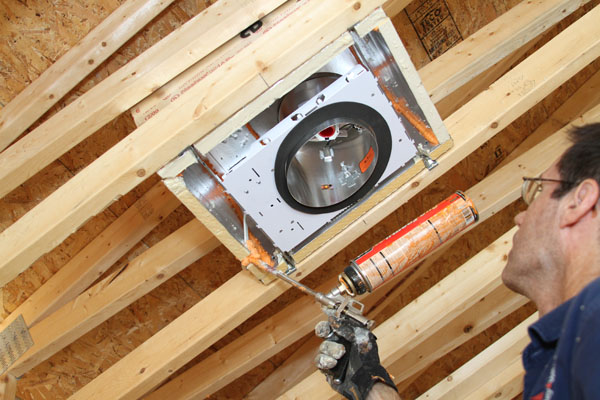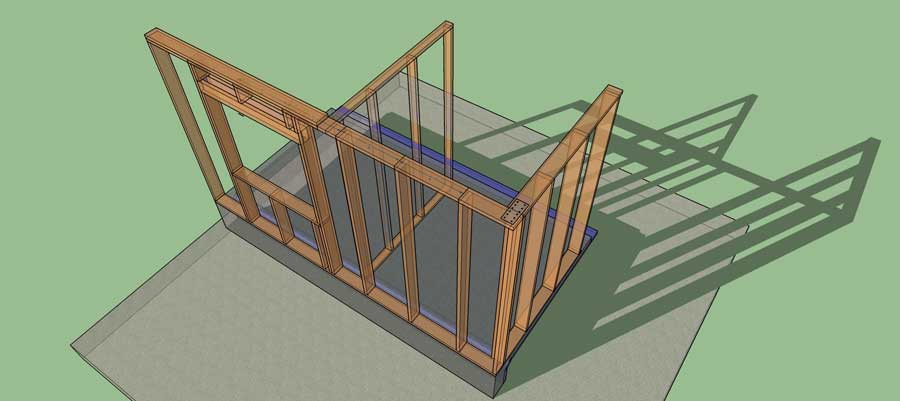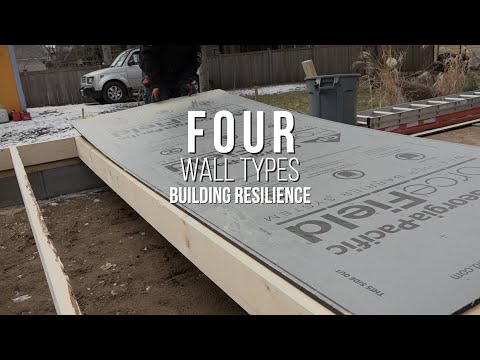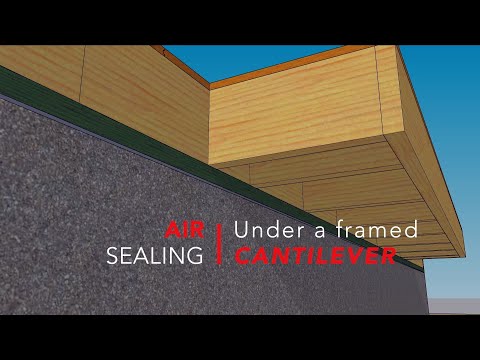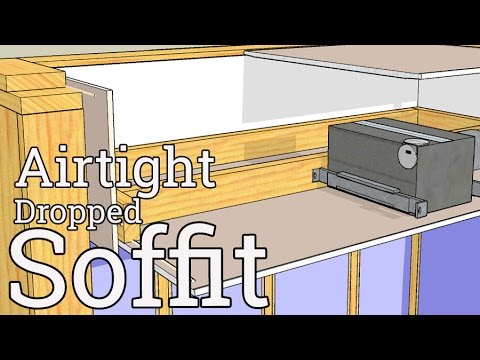With blower door tests in the building code, it is up to more than just the insulators or the GC to deliver results: many trades have a stake.
Turns out, it is easy for a drywall contractor to become involved in improving building performance.
Because drywall makes a great air barrier, all you have to do is improve how it is installed to significantly boost airtightness.
It begins with big holes in the wall like electrical outlets which connect the living space to the wall cavity.
Step 1 is to seal the holes in work boxes
Use either low expansion foam or specialty products like this airtight box
Seal the foam box to the stud and then lay a bead of caulk on the perimeter face to seal against the back of the drywall.
Holes in the ceiling can leak even more because of stack effect
A bead of sealant around the perimeter of the can light will help, but an airtight box over the fixture can do even more. You can make it with drywall or rigid foam.
Another big source of leaks is the actual wall framing.
In general, if you glue the drywall to the studs, you'll plug a lot of holes. Glue should extend plate to plate and on each stud.
Windows present a special set of sealing circumstances
Run a bead of adhesive along the gap between the king stud and the trimmer stud and make sure that all beads intersect around the window and also at the top, bottom, and corners.
Intersecting partition walls don’t look like leaks, but really, they are very long leaks
There is an eight foot gap along each edge of the stud, making a 16 foot crack in the wall. The best way to deal with this crack, though, is to not create it in the first place.
gap the wall framing off the exterior wall and run drywall continuously through. The next best thing is to seal the gaps in the framing at the plates and to float the corners to reduce cracks.
Above the walls are more hidden gaps
Wherever the ceiling meets the wall is a spot open to air leaks. You can seal it with canned foam, caulk, or acoustical sealant, depending on the size of the gap.
When the architect, general contractor and subcontractors are on the same page, you can close the book on air leaks.
— Myron Ferguson is a drywall contractor and construction trainer. These details are based on an article by Myron Ferguson, multiple conversations with Myron, and a video series that we shot together back in the good ol' days.
